The Facts About Skin Treatments
Somewhere between throwing a few AHAs into your skincare routine and going for a total surgical overhal, there's been an explosion of not-quite-drastic procedures. Are they worth it?
By Jenny Bailly

Peels
What they are: Doctor- or aesthetician-administered treatments that use either a chemical (hydroxy acids or trichloroacetic acid) or mechanical process (microdermabrasion) to lift away the upper layers of the skin.
How they work: For a chemical peel, an acid solution is painted on the face like a mask. The higher the concentration (or the longer it is left on), the more layers of skin that will be peeled away. Microdermabrasion uses aluminum oxide crystals to buff away dead skin cells. "Many women need more exfoliation around the nose, mid-forehead, and chin, and with mechanical exfoliation, it's easier to focus on those areas," says Heidi Waldorf, MD, associate clinical professor of dermatology at the Mount Sinai School of Medicine. Some doctors are praising a newer system called Vibraderm, which uses vibrating metal paddles to exfoliate the skin. Eliot F. Battle Jr., MD, assistant clinical professor of dermatology at Howard University, prefers it for his African-American patients because the paddles are gentler than crystals—important for dark skin, which is vulnerable to spots when it becomes irritated or traumatized. More and more microdermabrasion techniques are also marrying exfoliation with topical treatments. The Vibraderm treatment can be followed up with a solution of antioxidants, glycolic acid, collagen, or bleaching agents. The SilkPeel or DermaSweep machines remove dead cells while delivering either hydroquinone to lighten dark spots, salicylic acid to heal acne, or hyaluronic acid to hydrate dry patches.
Results: One light chemical peel or microdermabrasion treatment will leave the skin temporarily brighter; a series of at least four is necessary to get results that can last several months, like a smoothing of rough patches and more even pigmentation.
Medium or deep chemical peels should be done only in a doctor's office. Because these peels reach all the way to the dermis, collagen production is stimulated with one treatment. Fine lines are effaced, and skin may even be slightly tighter.
How they work: For a chemical peel, an acid solution is painted on the face like a mask. The higher the concentration (or the longer it is left on), the more layers of skin that will be peeled away. Microdermabrasion uses aluminum oxide crystals to buff away dead skin cells. "Many women need more exfoliation around the nose, mid-forehead, and chin, and with mechanical exfoliation, it's easier to focus on those areas," says Heidi Waldorf, MD, associate clinical professor of dermatology at the Mount Sinai School of Medicine. Some doctors are praising a newer system called Vibraderm, which uses vibrating metal paddles to exfoliate the skin. Eliot F. Battle Jr., MD, assistant clinical professor of dermatology at Howard University, prefers it for his African-American patients because the paddles are gentler than crystals—important for dark skin, which is vulnerable to spots when it becomes irritated or traumatized. More and more microdermabrasion techniques are also marrying exfoliation with topical treatments. The Vibraderm treatment can be followed up with a solution of antioxidants, glycolic acid, collagen, or bleaching agents. The SilkPeel or DermaSweep machines remove dead cells while delivering either hydroquinone to lighten dark spots, salicylic acid to heal acne, or hyaluronic acid to hydrate dry patches.
Results: One light chemical peel or microdermabrasion treatment will leave the skin temporarily brighter; a series of at least four is necessary to get results that can last several months, like a smoothing of rough patches and more even pigmentation.
Medium or deep chemical peels should be done only in a doctor's office. Because these peels reach all the way to the dermis, collagen production is stimulated with one treatment. Fine lines are effaced, and skin may even be slightly tighter.
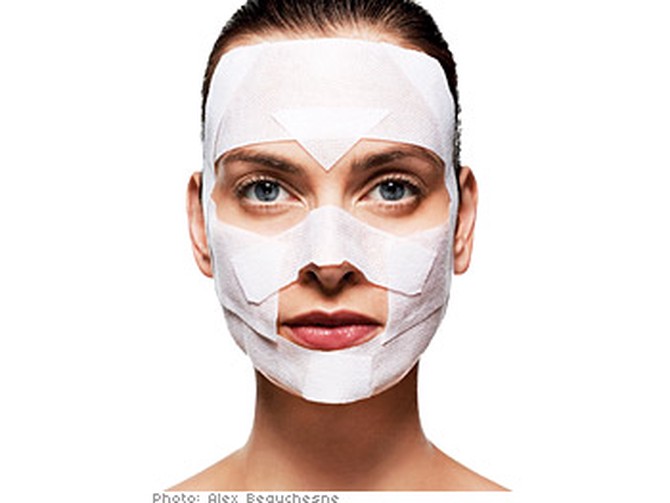
Peel pain
Pain-o-meter ( 1 = light pinprick and 5 = agony): Anywhere from 1 to 3. Microdermabrasion feels like a soft suction against your skin. Light peels cause mild stinging but are rinsed away within two minutes (and most doctors and aestheticians direct a small fan at the face to minimize any discomfort). Medium peels (usually trichloroacetic acid) are much more intense, so Ranella Hirsch, MD, president-elect of the American Society of Cosmetic Dermatology & Aesthetic Surgery, tells patients to take one extra-strength Tylenol beforehand and often uses a high-powered machine called a Zimmer cooler to blast cold air against the skin so that any burning sensation is slight. Deep peels (which use a substance called phenol) are rarely performed anymore (they've been replaced by lasers); they are quite painful and require complete sedation.
Downtime: Your skin may be slightly pink for a day after a light chemical peel or microdermabrasion. A medium peel will leave your face red and flaky for several days. And following a deep peel, the skin will crust over and can remain red for a month or more. Gauze (like what you see at left) is often applied for the first few days to help the skin retain moisture and heal more quickly, says Alan Matarasso, MD, clinical professor of plastic and reconstructive surgery at the Albert Einstein College of Medicine at Yeshiva University. The deeper the peel, the higher the risks of hypopigmentation, so anything beyond a light peel is risky for women with darker skin. And only light peels are safe to use on the neck and chest (where there is a greater risk of scarring).
Average cost: $100 to $200 for a light peel, $400 to $4,000 for a medium to deep, depending on size of area being treated.
Downtime: Your skin may be slightly pink for a day after a light chemical peel or microdermabrasion. A medium peel will leave your face red and flaky for several days. And following a deep peel, the skin will crust over and can remain red for a month or more. Gauze (like what you see at left) is often applied for the first few days to help the skin retain moisture and heal more quickly, says Alan Matarasso, MD, clinical professor of plastic and reconstructive surgery at the Albert Einstein College of Medicine at Yeshiva University. The deeper the peel, the higher the risks of hypopigmentation, so anything beyond a light peel is risky for women with darker skin. And only light peels are safe to use on the neck and chest (where there is a greater risk of scarring).
Average cost: $100 to $200 for a light peel, $400 to $4,000 for a medium to deep, depending on size of area being treated.
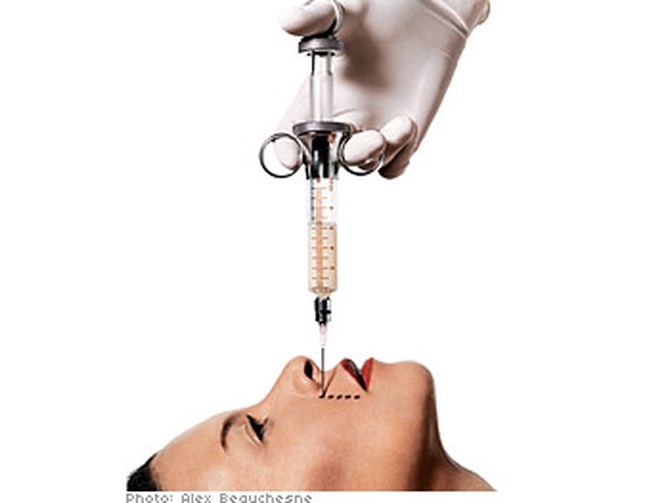
The Needle Pain Factor
Without any anesthetic, injections (whether a filler or Botox) can feel like anything from a mosquito bite to a bee sting. Most doctors will apply a topical numbing cream beforehand; collagen fillers are always premixed with an anesthetic to further minimize discomfort. Many doctors will also administer a "nerve block" (a shot similar to the one you get at the dentist) to numb the entire area so you'll hardly even feel a prick. This is almost always done when you're getting a filler in the lips or near the mouth, by far the most sensitive area of the face.
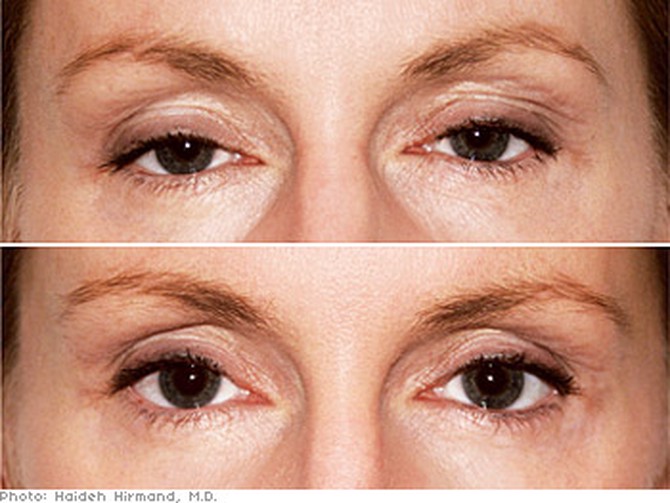
Restylane Injections
This 42-year-old woman had Restylane injected in the hollows beneath her eyes. "Dark circles that worsen with age are often the result of volume loss, which leaves shadows under the eyes," says Haideh Hirmand, MD, assistant clinical professor of surgery at Weill Medical College of Cornell University, who performed this procedure. "A hyaluronic acid filler can immediately make you look more well rested." Results can last up to 12 months. "I tell patients they really don't need this procedure more than once a year," says Hirmand.
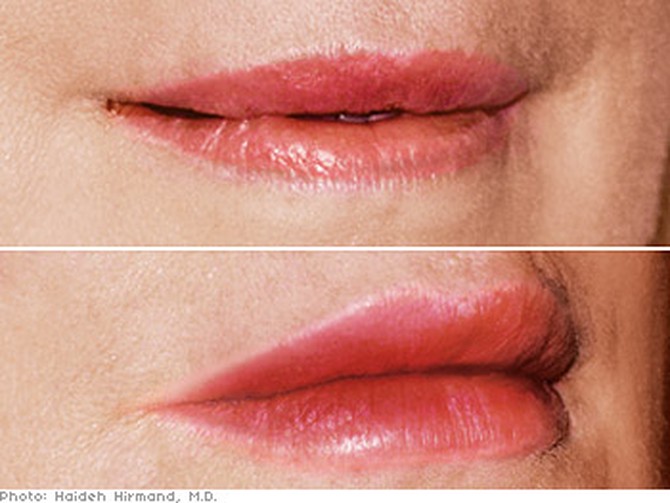
Restylane for Lips
Most doctors find that the hyaluronic acid fillers or collagen are most effective in the lip area. For the 65-year-old woman photographed here (below), Hirmand injected Restylane into both the upper and lower lips and along the lip border. "Less is definitely more in the lips; instead of injecting the full amount at once, I inject a little and then do another layer a month later," she says. "It's more precise." Results will last four to six months. (The lips are the first place you'll lose any filler, because your muscles there are very strong and mobile.) All patients experience some degree of swelling after the procedure. "To be safe, don't schedule any big events for a week," says Hirmand.
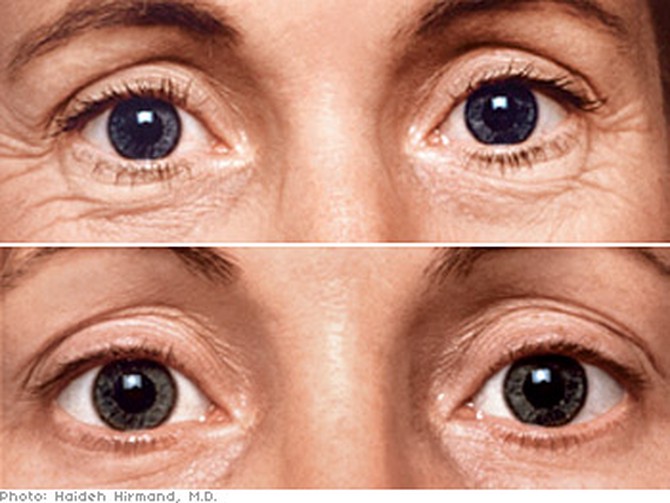
Lower Eyelid Surgery and Peels
The only way to remove excess skin and fat pads underneath the eyes is with a scalpel. On this 48-year-old woman, lower eyelid surgery (called blepharoplasty) was followed with a trichloroacetic acid (TCA) peel to soften fine lines. "You can correct deep grooves surgically, but fine lines will be smoothed only with the resurfacing of a chemical or laser peel," says Richard Fleming, MD, clinical professor of plastic surgery at the University of Southern California, who performed the operation. He also injected fat harvested from her thigh into the hollows of her tear troughs. (Sometimes the fat beneath the eyes can be repositioned during lower eyelid surgery, but that wasn't possible in this case.) All three procedures were performed at once, and the downtime (swelling and bruising) was seven to 10 days. The results should last about 15 years, says Fleming.
The latest non-surgical skin procedures
The latest non-surgical skin procedures
From the March 2007 issue of O, The Oprah Magazine

